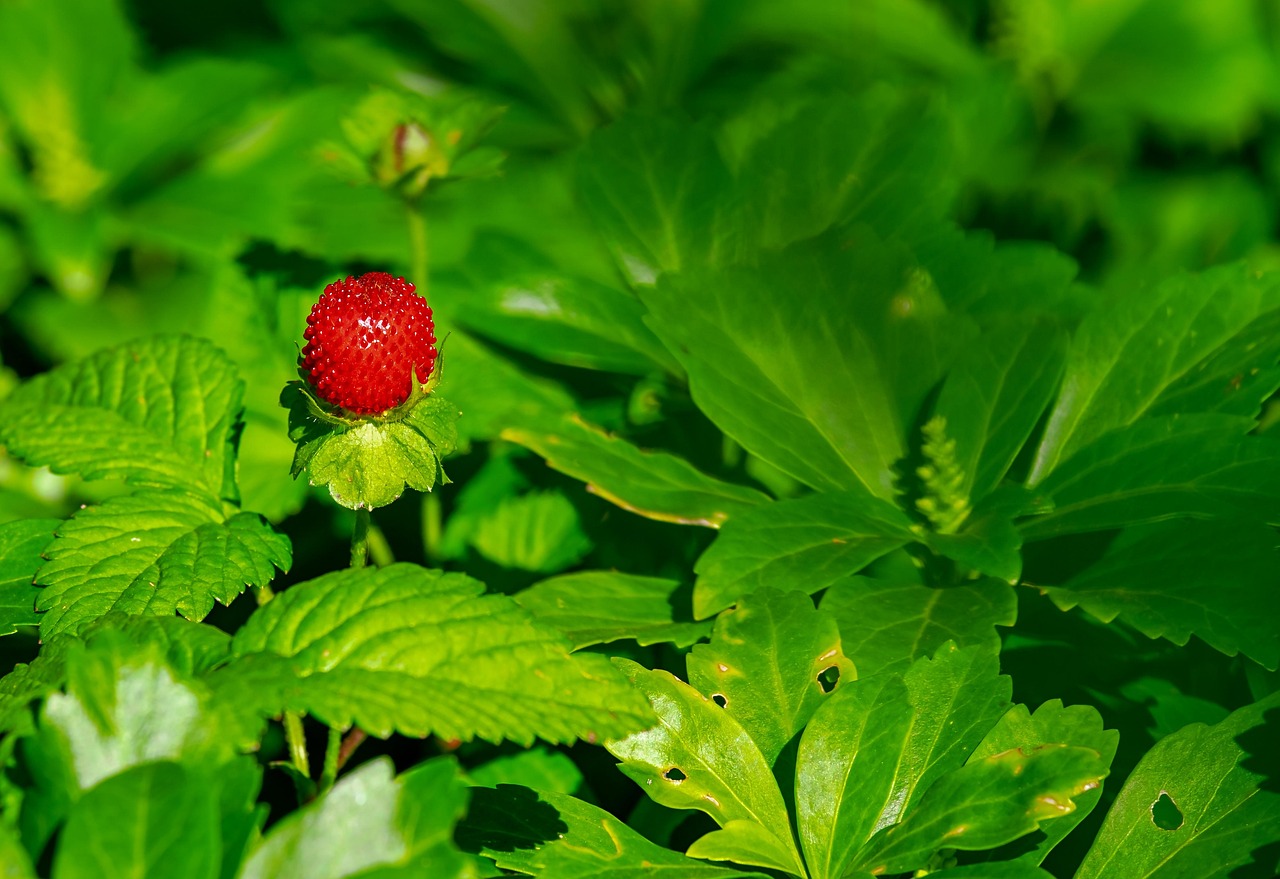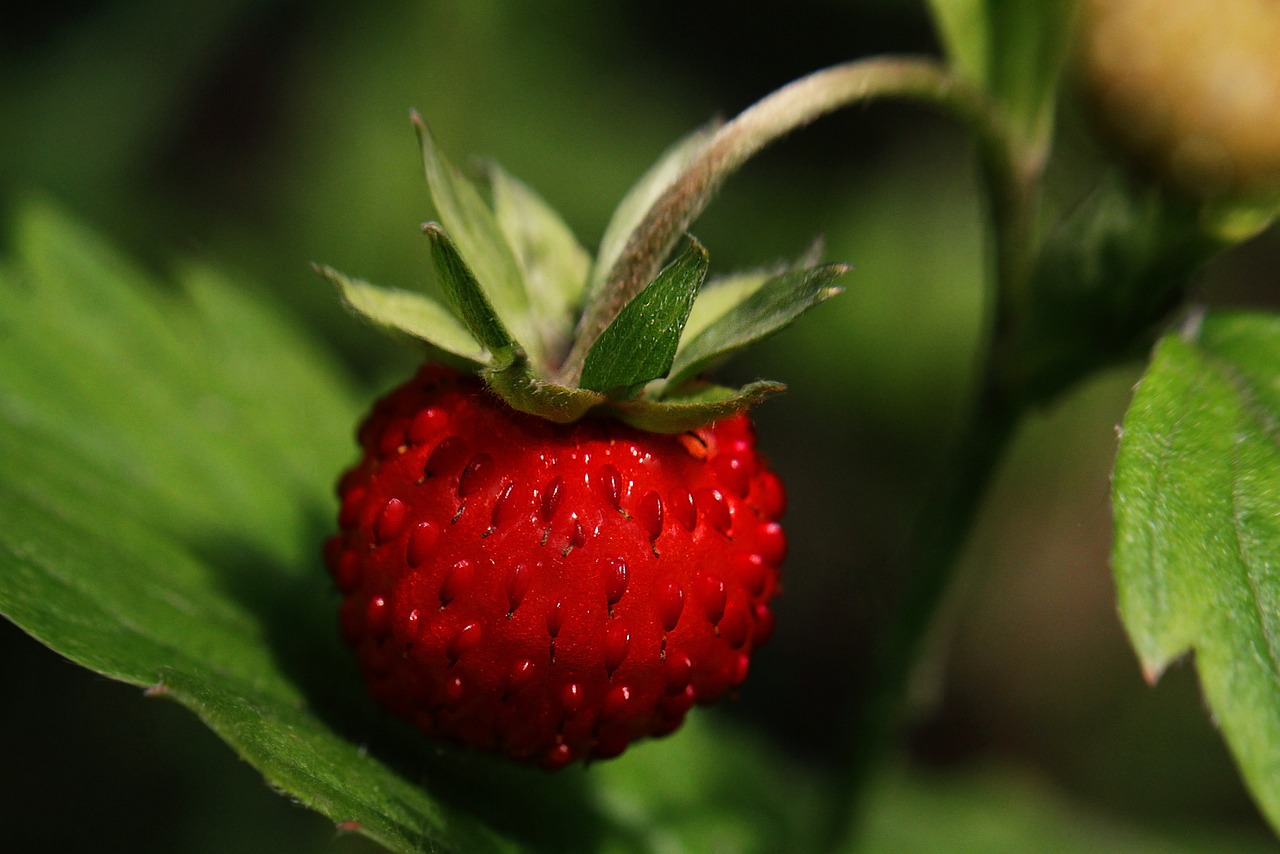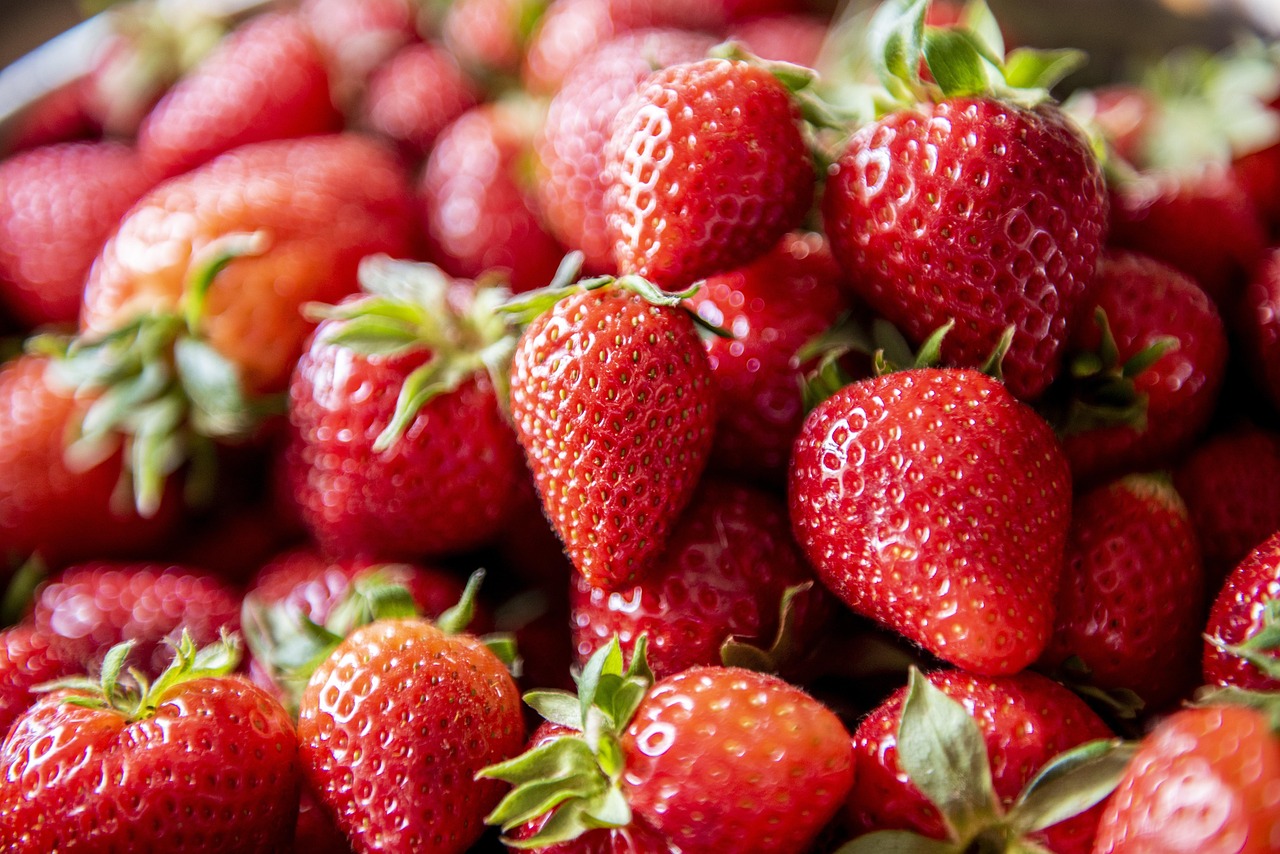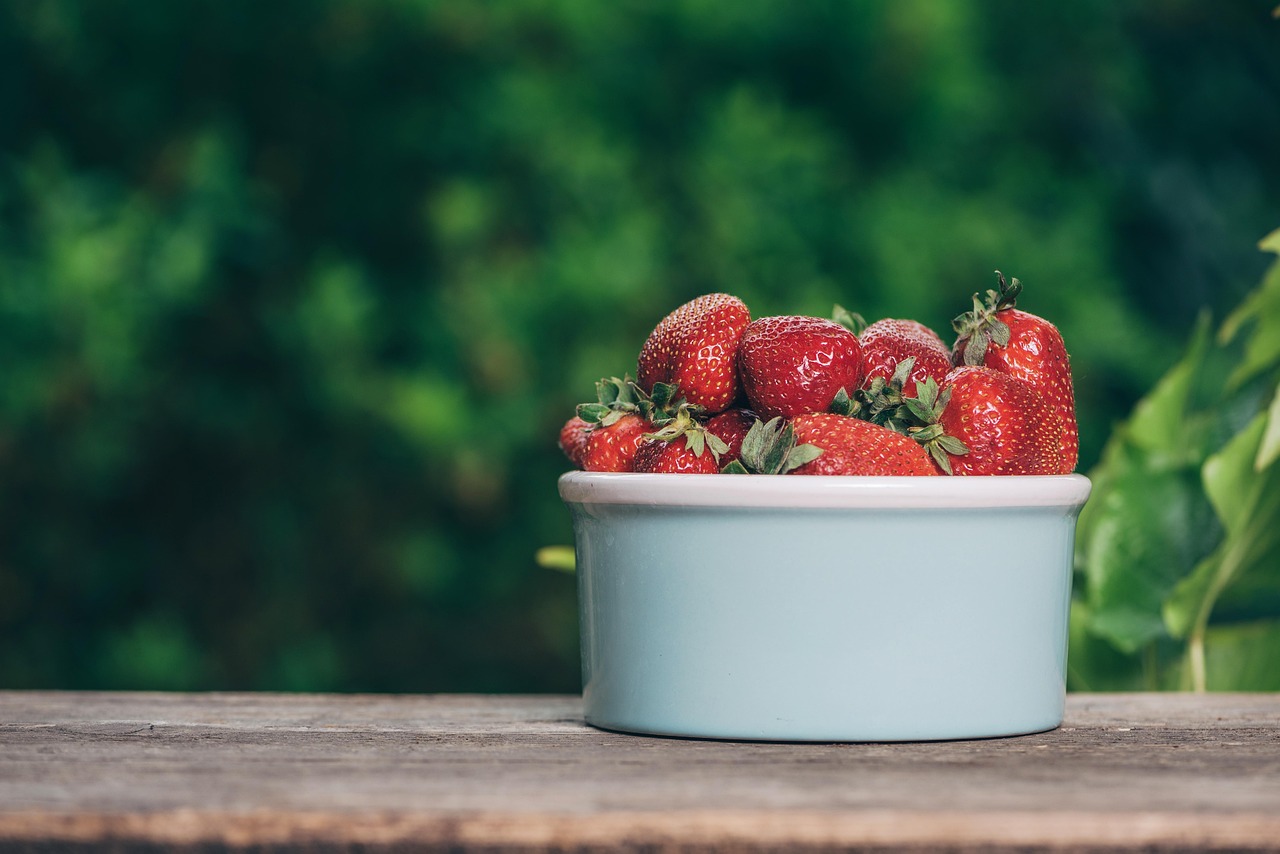Curling down strawberry leaves can be caused by various factors, including environmental stress, pests, and diseases. To address leaf curl, it is essential to identify the underlying cause, apply appropriate treatments, and maintain optimal growing conditions.
Strawberries are a beloved fruit among gardeners and farmers alike. Known for their sweet flavor and vibrant color, these berries are also relatively easy to grow. However, like any plant, strawberries can face challenges that affect their health and productivity. One common issue is the curling of strawberry leaves, which can be a sign of distress.
Leaf curl may manifest as the edges of leaves rolling downward, often impacting the overall appearance and vigor of the plant. Understanding the causes behind this phenomenon is crucial for effective management. Factors such as inadequate watering, pest infestations, and environmental conditions can contribute to leaf curl.
Common Causes of Leaf Curl in Strawberries

Several factors can lead to leaf curl in strawberry plants. Identifying these causes will help growers take the necessary steps to mitigate the problem. Here are some of the most common reasons:
- Environmental Stress: Extreme temperatures, either hot or cold, can cause leaves to curl. Sudden changes in weather conditions can also impact plant health.
- Pest Infestation: Insects such as aphids and spider mites can damage strawberry plants. They feed on sap, causing leaves to curl and become distorted.
- Diseases: Fungal infections or viral diseases can lead to abnormal leaf growth. These pathogens may attack the plant’s tissues, resulting in curling leaves.
- Nutrient Deficiencies: A lack of essential nutrients, particularly nitrogen or potassium, can cause leaves to curl and show signs of distress.
- Watering Issues: Overwatering can lead to root rot, while underwatering can stress the plant. Both conditions can cause leaf curling.
Understanding these causes is the first step in addressing leaf curl effectively. Growers must carefully observe their plants and the surrounding environment to pinpoint the issue.
| Cause | Description |
|---|---|
| Environmental Stress | Extreme temperatures or sudden weather changes. |
| Pest Infestation | Insects feeding on plant sap. |
| Diseases | Fungal or viral infections affecting leaf growth. |
| Nutrient Deficiencies | Insufficient essential nutrients for healthy growth. |
| Watering Issues | Both overwatering and underwatering can stress plants. |
By knowing the causes of leaf curl, gardeners can take steps to remedy the situation. Monitoring plant health regularly allows for early detection of issues, ensuring that strawberry plants remain strong and productive. In the following sections, we will explore how to address each of these causes effectively.
Addressing Environmental Stress
Environmental stress is a significant factor that can lead to curling down of strawberry leaves. This stress can arise from extreme temperatures, inadequate sunlight, or sudden changes in weather conditions. Understanding how to mitigate these stresses will help maintain healthy strawberry plants.
Temperature Extremes
Strawberries thrive in moderate temperatures. When temperatures soar above 85°F (29°C) or drop below 32°F (0°C), the plants can experience stress. Here are some strategies to manage temperature extremes:
- Mulching: Apply organic mulch around the base of the plants. This helps retain soil moisture and regulate soil temperature.
- Shade Cloth: Use shade cloth during hot summer days to protect plants from excessive heat and sun exposure.
- Frost Protection: In cooler climates, cover plants with row covers or blankets during frost to shield them from cold temperatures.
Sudden Weather Changes
Rapid changes in weather can shock strawberry plants. For example, a sudden cold snap after a warm period can lead to leaf curling. To combat this:
- Gradual Acclimatization: If moving plants outdoors after winter, acclimatize them gradually to prevent shock.
- Adequate Watering: Ensure consistent watering before and after weather changes to help plants cope better.
Pest Management Strategies
Pests are another common cause of leaf curl in strawberries. Effective pest management is essential for protecting plant health. Below are some strategies to keep pests at bay:
Identifying Common Pests
Aphids and spider mites are two of the most frequent culprits that lead to leaf curling. Identifying these pests early can help prevent severe damage.
- Aphids: Small, soft-bodied insects that cluster on the undersides of leaves, sucking sap.
- Spider Mites: Tiny arachnids that create fine webs and can cause yellowing and curling of leaves.
Natural Control Methods
Implementing natural pest control methods can minimize damage while reducing the need for chemical pesticides. Consider the following options:
- Insecticidal Soap: Spray affected plants with insecticidal soap to eliminate pests without harming beneficial insects.
- Nematoids: Introduce beneficial nematodes into the soil. These microscopic organisms target harmful pests without affecting the plant.
- Companion Planting: Plant marigolds or nasturtiums nearby. These flowers attract beneficial insects that prey on aphids and other pests.
Disease Management Techniques
Diseases can seriously impact strawberry plants, leading to leaf curling and diminished fruit quality. Understanding disease management is critical for maintaining healthy crops.
Identifying Common Diseases
Some diseases that can affect strawberry plants include:
- Powdery Mildew: A fungal disease characterized by white powdery spots on leaves.
- Leaf Spot: Fungal infections causing dark spots on leaves, which can lead to curling.
Preventive Measures
Preventing disease is often more effective than treating it. Here are some preventive measures to consider:
- Proper Spacing: Ensure adequate spacing between plants to improve air circulation, reducing humidity and disease risk.
- Crop Rotation: Rotate strawberry crops every few years to prevent soil-borne diseases from accumulating.
- Pest Control: Regularly monitor and control insect populations to prevent them from spreading diseases.
By addressing environmental stressors, managing pests, and preventing diseases, strawberry growers can enhance the health of their plants and minimize leaf curling effectively.

Managing Nutrient Deficiencies

Nutrient deficiencies can significantly affect the growth and health of strawberry plants, leading to symptoms such as leaf curl. Understanding which nutrients are essential and how to provide them can help prevent these issues.
Essential Nutrients for Strawberries
Strawberries require a balanced supply of nutrients for optimal growth. Here are some key nutrients that are vital:
- Nitrogen: Crucial for leaf and stem growth. A deficiency can lead to yellowing leaves and curling.
- Phosphorus: Important for root development and flowering. Insufficient phosphorus may result in stunted growth.
- Potassium: Aids in overall plant health and fruit quality. Low potassium can cause leaf edges to curl or turn brown.
- Calcium: Essential for cell wall structure. A lack of calcium can lead to weak plants and blossom end rot.
Signs of Nutrient Deficiencies
Recognizing the signs of nutrient deficiencies early is critical for effective management. Some common symptoms include:
- Yellow Leaves: Often a sign of nitrogen deficiency, indicating that the plant is not receiving enough nutrients.
- Curling Leaves: Curling can occur due to a lack of potassium or other essential nutrients.
- Poor Fruit Quality: If fruits are small or not developing properly, it may indicate insufficient phosphorus or potassium.
Addressing Nutrient Deficiencies
Once deficiencies are identified, appropriate measures can be taken to restore nutrient balance in the soil. Consider the following approaches:
Soil Testing
Conducting a soil test is the first step in addressing nutrient deficiencies. A soil test can provide insights into nutrient levels and pH balance. Based on the results, you can tailor your fertilization strategy effectively.
Fertilization Strategies
Applying the right fertilizers can help replenish essential nutrients in the soil. Here are some strategies to consider:
- Organic Fertilizers: Use compost or well-rotted manure to enrich the soil with nutrients naturally. These amendments improve soil structure and provide a slow release of nutrients.
- Water-Soluble Fertilizers: Quick-release fertilizers can be applied during the growing season to address immediate deficiencies. Look for formulations specifically designed for strawberries.
- Granular Fertilizers: Apply granular fertilizers at planting time or during early growth stages. Ensure they contain balanced N-P-K ratios suitable for strawberries.
Monitoring Plant Health
Regularly monitoring the plants for signs of nutrient deficiencies is essential after applying fertilizers. This includes checking leaf color, growth patterns, and fruit quality. Adjust your fertilization schedule based on these observations to ensure optimal plant health.
Watering Practices and Their Impact

Watering practices play a crucial role in the health of strawberry plants. Both overwatering and underwatering can lead to stress, resulting in leaf curl. Understanding how to manage watering effectively is vital for plant health.
Understanding Water Requirements
Strawberries generally require consistent moisture, especially during the growing season. However, their water needs may vary based on factors such as:
- Soil Type: Sandy soils drain quickly, requiring more frequent watering, while clay soils retain moisture longer.
- Weather Conditions: Hot, dry weather increases water needs, while cooler, humid conditions may reduce them.
- Growth Stage: Young plants need more water to establish roots, whereas established plants require less frequent watering.
Adequate Watering Techniques
Implementing proper watering techniques can help maintain consistent moisture levels without causing stress:
- Irrigation Systems: Consider using drip irrigation to deliver water directly to the root zone, minimizing water waste and reducing disease risk.
- Mulching: Apply organic mulch around plants to retain soil moisture and suppress weeds.
- Watering Schedule: Water early in the morning or late afternoon to minimize evaporation and allow plants to absorb moisture effectively.
By focusing on nutrient management and proper watering practices, strawberry growers can significantly reduce the incidence of leaf curling and promote healthier plants overall.
Implementing Integrated Pest Management (IPM)
In addition to addressing environmental stress, nutrient deficiencies, and watering practices, implementing an Integrated Pest Management (IPM) approach can greatly enhance the health of strawberry plants. IPM combines various management strategies to control pest populations in an environmentally sensitive manner.
Understanding IPM Principles
IPM focuses on long-term prevention of pests through a combination of techniques. The key principles include:
- Monitoring: Regularly inspect plants for signs of pests and diseases. Early detection can prevent small infestations from becoming severe.
- Identification: Accurately identify pests and beneficial insects. Understanding the roles these organisms play can help in deciding the best management practices.
- Thresholds: Establish economic thresholds for pest populations. This helps determine when pest control measures are necessary to avoid unacceptable damage.
- Cultural Practices: Enhance plant health through proper cultural practices, including crop rotation, timely planting, and maintaining soil health.
- Biological Control: Utilize natural predators or parasites to manage pest populations. For example, ladybugs can help control aphid populations.
- Chemical Control: If necessary, apply pesticides judiciously and only when other methods are ineffective. Choose less harmful options that target specific pests.
Benefits of IPM
The benefits of implementing an IPM program for strawberries are numerous:
- Environmental Protection: Reduces reliance on chemical pesticides, promoting a healthier ecosystem.
- Crop Health: Enhances overall plant health and resilience against pests and diseases.
- Cost-Effectiveness: Reduces the need for expensive chemical treatments and lowers production costs.
- Sustainable Practices: Encourages sustainable farming practices that can be maintained over the long term.
Final Thoughts
Curling down strawberry leaves can be a frustrating issue for gardeners and farmers alike. However, understanding the underlying causes is essential for effective management. By addressing environmental stressors, nutrient deficiencies, watering practices, and implementing integrated pest management strategies, growers can significantly enhance the health of their strawberry plants.
The importance of regular monitoring cannot be overstated. By keeping a close eye on plant health and promptly addressing any issues, it is possible to maintain lush foliage and abundant fruit production. Additionally, cultivating a healthy growing environment through proper soil management and cultural practices lays the foundation for healthy plants that are less susceptible to stressors.
In conclusion, the care and attention given to strawberry plants will ultimately determine their success. With the right knowledge and tools, growers can enjoy thriving strawberry crops while minimizing the risk of leaf curling and other common problems. By employing a holistic approach to plant care, it is possible to cultivate strawberries that are not only productive but also robust against challenges in the growing environment.
